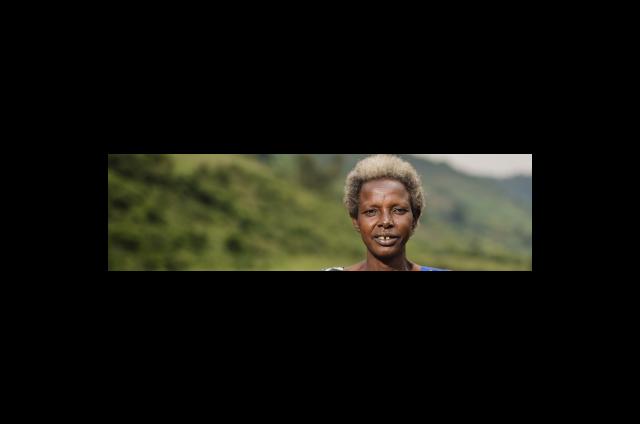Why women in conflict
It has probably become more dangerous to be a woman than a soldier in an armed conflict.
When war and insecurity take hold, women bear the heaviest burden of violence, poverty and inequality.
Gender norms restrict women’s access to education and economic resources, exclude them from decision-making, and expose them to many forms of violence and abuse.
Women are the targets of systematic rape and sexual violence, which is used as a weapon to terrorise and destroy communities.
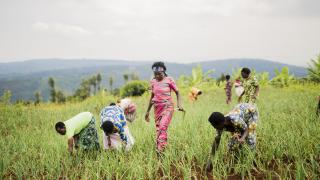
Despite these stark disadvantages, women are instrumental in caring and providing for their families at times of crisis, often stepping outside traditional domestic roles in order to survive.
Many become sole breadwinners after the loss of husbands and male relatives, and are struggling against the odds to both care and provide for their families.
Women for Women International targets the most marginalised women who live in extreme poverty, are directly affected by violence and conflict, and endure myriad forms of social and economic disadvantage.
More than half of the women in our programmes are illiterate. All earn less than $1.25 a day. Many are widows, refugees, or survivors of rape and abuse.
50%
1.2 billion
1 in 5
refugee or internally displaced women have faced sexual violence
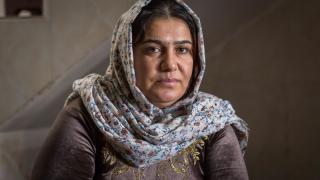
Violence Against Women
Violence against women is one of the biggest blocks to women’s social, economic and political participation at all levels.
The effects of conflict - economic insecurity, increased levels of crime, destroyed infrastructure, and weakened rule of law - all directly impact on the risk of violence against women and girls.
In all the countries where we work, rape and sexual violence have been used as weapons of war to terrorise and destroy communities.
Evidence suggests that the most common form of violence against women in conflict-affected countries is intimate partner violence. The vast majority of violence suffered by women in conflict areas is at the hands of their own family members.
- Up to 50,000 women were raped during the Bosnian war.
- An estimated 250,000 women were raped during the Rwandan genocide.
- Over 80% of Syrian women refugees in Iraq live in daily fear of abuse.
- Nearly 90% of Afghan women experience domestic abuse during their lifetime.
- 27% of DRC’s women have survived sexual violence, and 57% domestic violence.
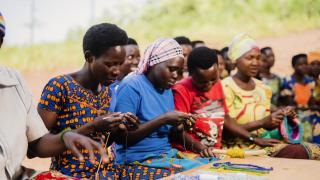
Women’s Economic Empowerment
Globally, there has been significant progress in reducing poverty in the past 15 years - nearly 1.1 billion fewer people live in extreme poverty ($1.90 a day) compared to 1990. But women in fragile and conflict-affected countries are being left behind.
By 2030, fragile and conflict-affected countries will be home to 46% of the world’s extreme poor – and women and female-headed households are most likely to be at the bottom of the economic pyramid.
The women we serve face multiple barriers to becoming economically empowered, including discriminatory gender norms; lack of access to education, opportunities and resources; and poor access to markets.
Economic empowerment is critical for women to determine the course of their lives and reach their full potential.
World Bank and OECD research have also repeatedly shown that women’s economic participation is a key component of achieving long-term development goals, including economic growth, poverty reduction, health and education.
With access to income and economic security, women are more likely to invest in health, education, and nutrition for their children and families – the building blocks of thriving societies.
Read the story of these women entrepreneurs building brighter futures for their families.
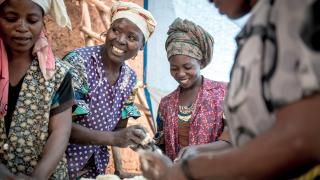
Women as Peacebuilders
Women’s double burden as carer and provider – as well as their increased vulnerability to poverty – are barriers to women’s participation in peacebuilding.
Investing in women is increasingly recognised as having a positive impact on peacebuilding and conflict prevention – by promoting stronger and more resilient societies, and facilitating women’s participation in peace processes.

- Between 1990 and 2017, women constituted only 2% of mediators, 8% of negotiators, and 5% of witnesses and signatories in all major peace processes.
- The majority of peace agreements signed from 1990 to today included zero female signatories.
- Women’s direct participation in peace negotiations increases the sustainability and the quality of peace.
- The larger the gender gap, the more likely a country is to be involved in conflict.
-
When women participate in peace processes, the resulting agreement is 35% more likely to last at least 15 years.
Read more about how graduates of our programme are taking the lead in building peace in their communities.

